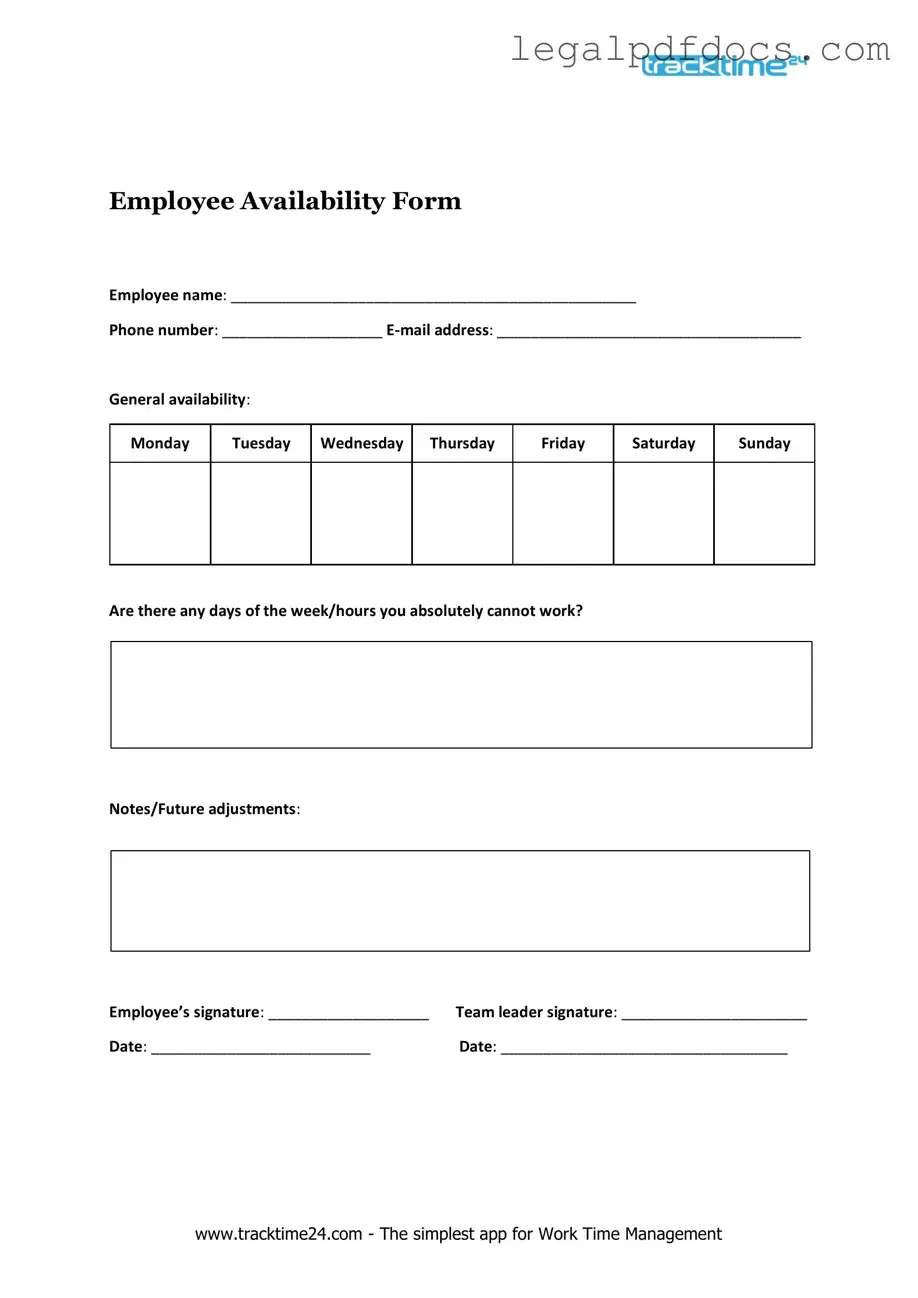Fill Out a Valid Employee Availability Template
The Employee Availability form is a document used by employers to gather information about an employee's schedule preferences and availability for work shifts. This form helps ensure that staffing needs align with the personal commitments of employees, promoting a balanced work-life environment. For convenience, fill out the form by clicking the button below.
Open Employee Availability Editor Here
